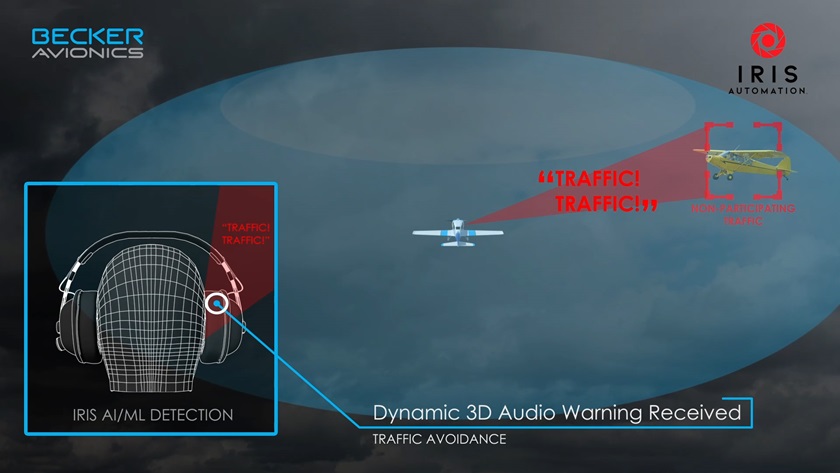Better than human eyes
Traffic spotting system tailored for GA, NORSEE
An optional aircraft accessory that some might view as an essential backup to human vision soon could help you see and avoid objects of many shapes and sizes.

AOPA has watched Iris Automation develop and deploy its Casia computer vision-based collision avoidance system for drones with great interest in recent years, particularly perking up when the company hinted in 2019 and 2020 that the computer vision setup could become broadly available throughout general aviation, not just for remotely piloted aircraft. In a nutshell, Casia uses a computer to analyze video fed from one or more cameras and identify objects, recognize them, and calculate closing trajectories if there’s a chance the object will cross the Casia-equipped aircraft’s path.
By focusing on aural alerting, rather than adding more traffic to existing displays usually found in the instrument panel, the Iris Automation-Becker Avionics product will free up the pilot’s eyes to start looking in the right direction based on that audio cue.
Iris Automation CEO Jon Damush foreshadowed this evolution of the basic product in December, noting that the company is driven to make flying safer, without regard to aircraft type or crew status.
Casia is being subjected to extensive testing in the context of FAA programs designed to advance drone technology and enable package delivery and other advanced operations at scale. It could become part of the type certificate of the first UAS to earn one, but that remains in the future. Meanwhile, it could see widespread adoption in GA much sooner, since it can be installed as non-required safety enhancing equipment, a path utilized by another drone industry pioneer to bring digital instruments into GA instrument panels.
Damush, in the recent press release, noted that the partnership with Becker Avionics, a global avionics supplier, will speed availability of this new product.
“This relationship is a pivotal move for Iris Automation as it defines and accelerates our work in the general aviation space,” Damush said. “Our core mission is to improve air safety by avoiding collisions and this extension of our technology is a natural evolution. We are excited to be able to work with one of the most storied brands in the industry to deliver this important innovation.”
Pricing and availability were not immediately announced.



